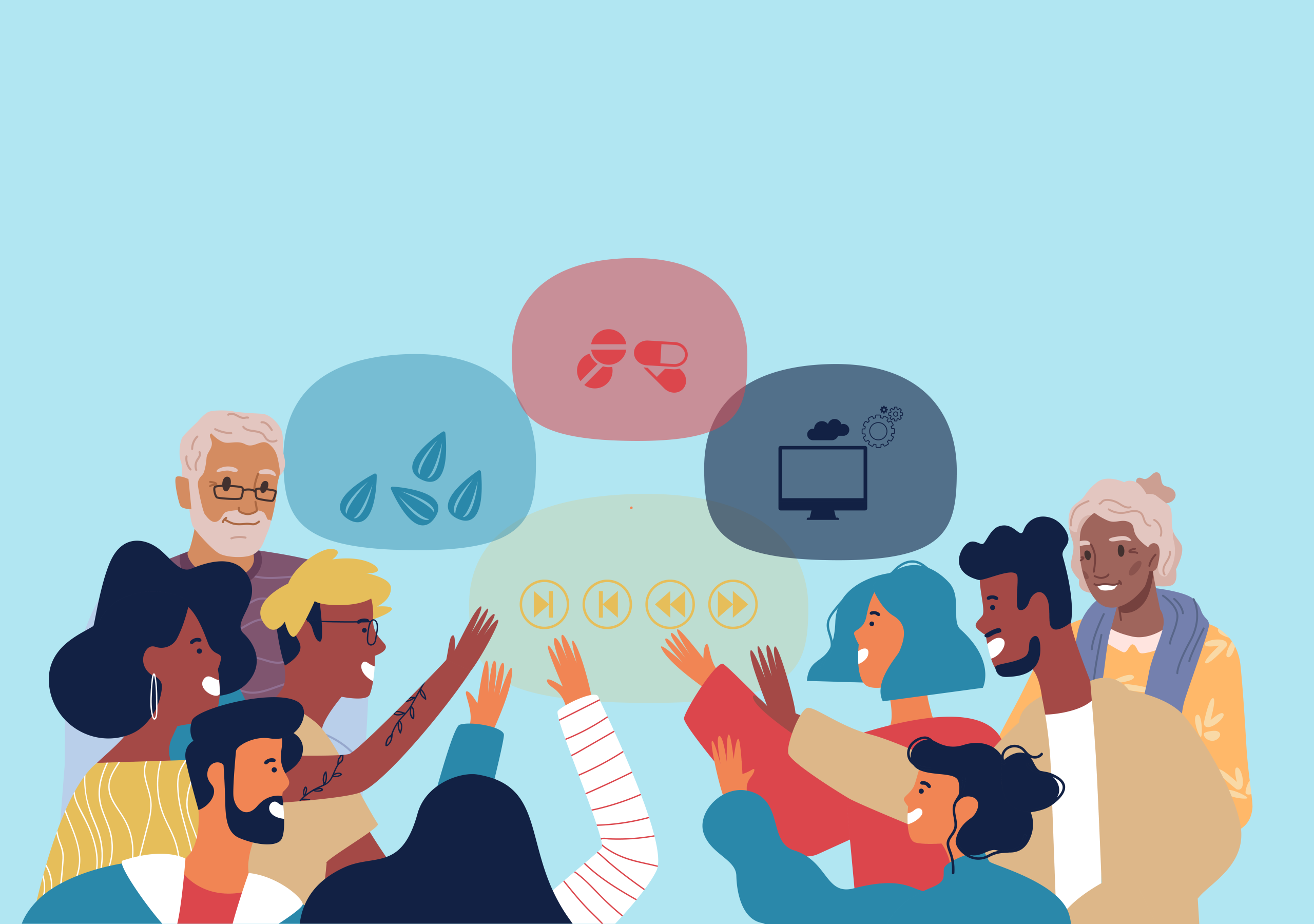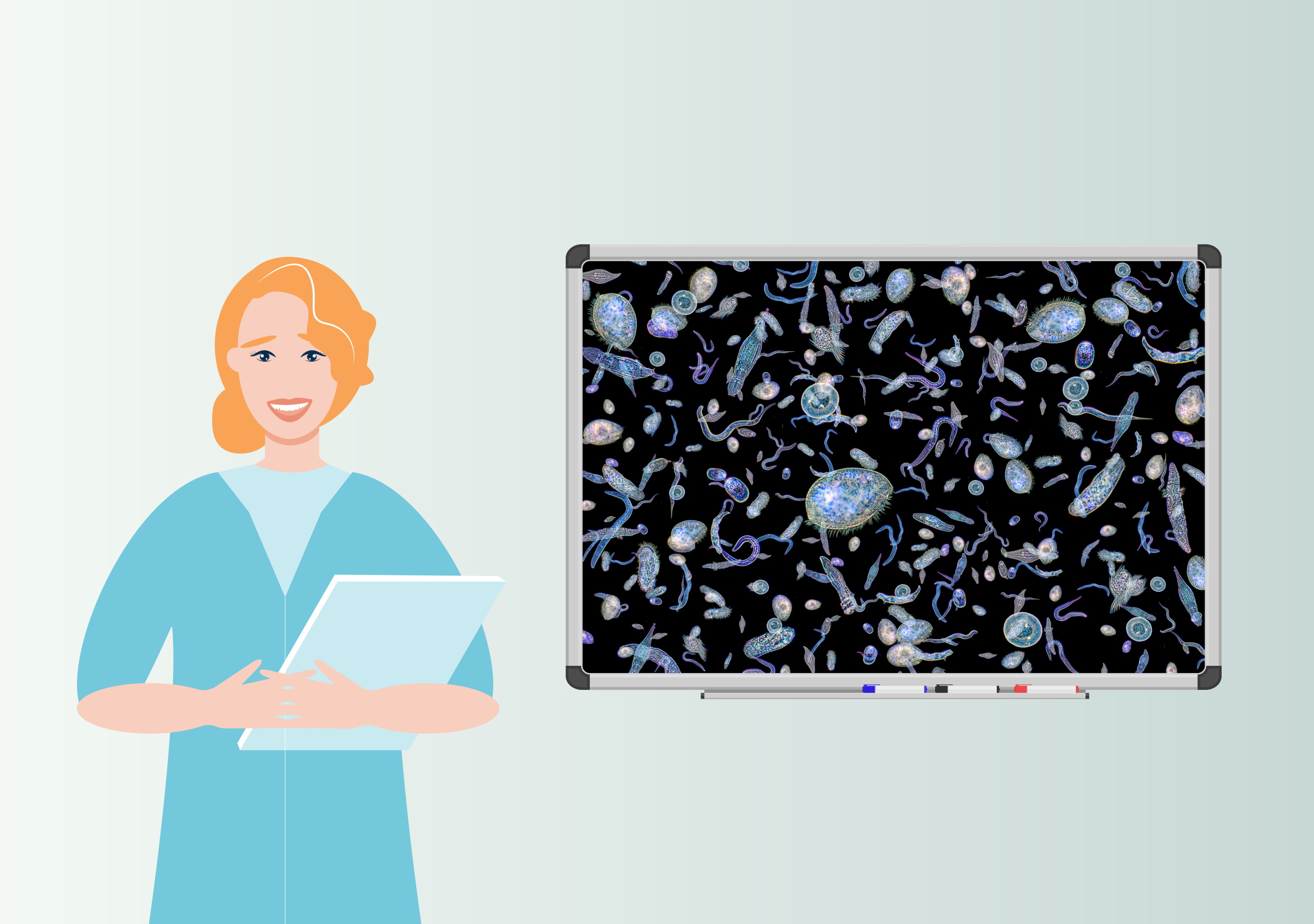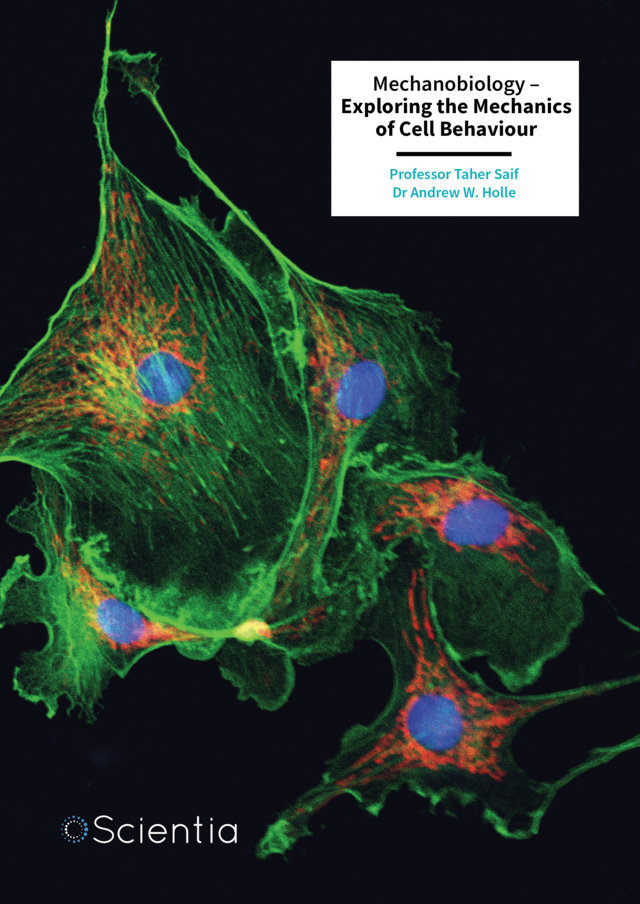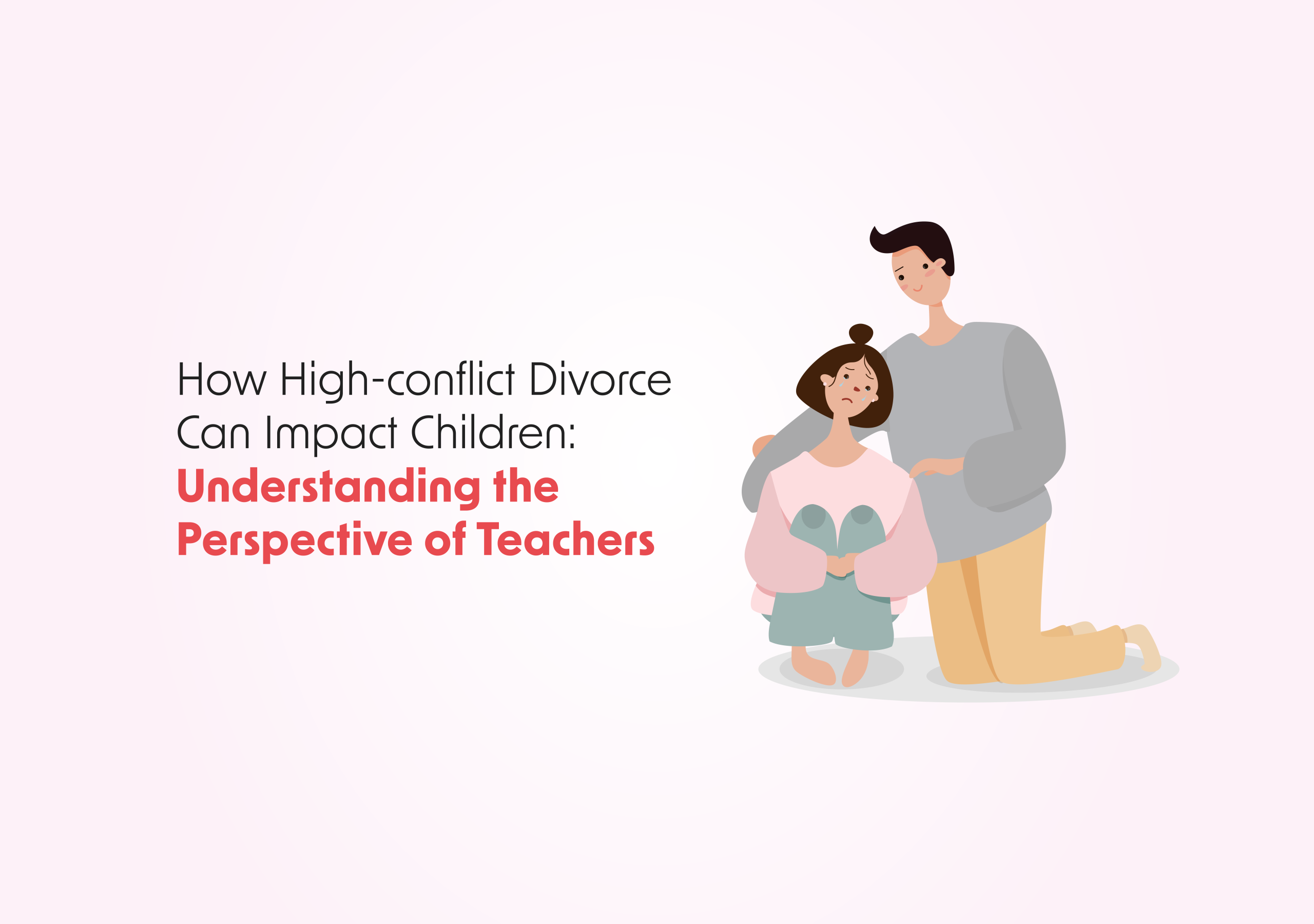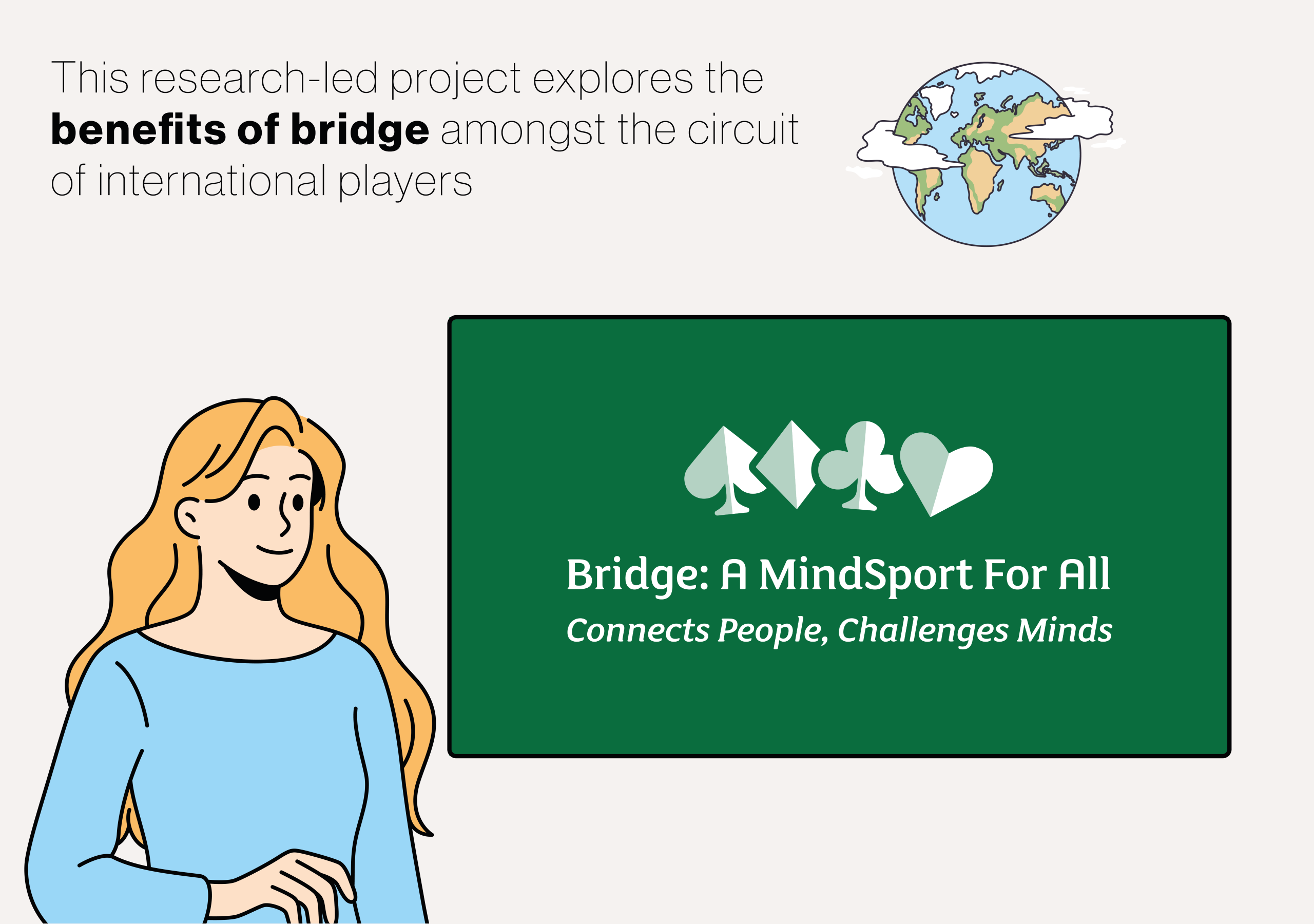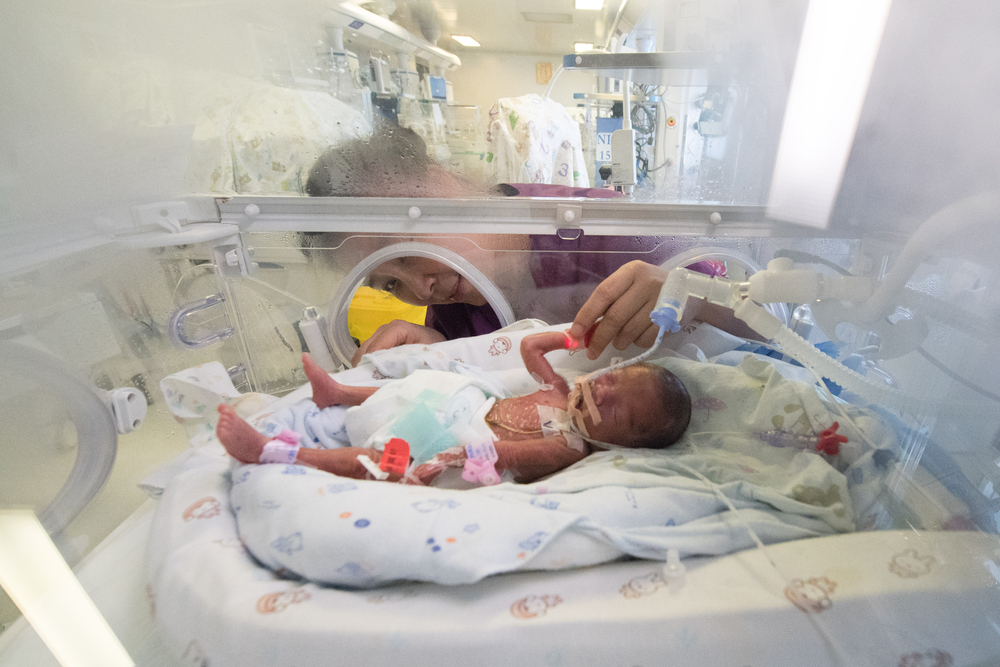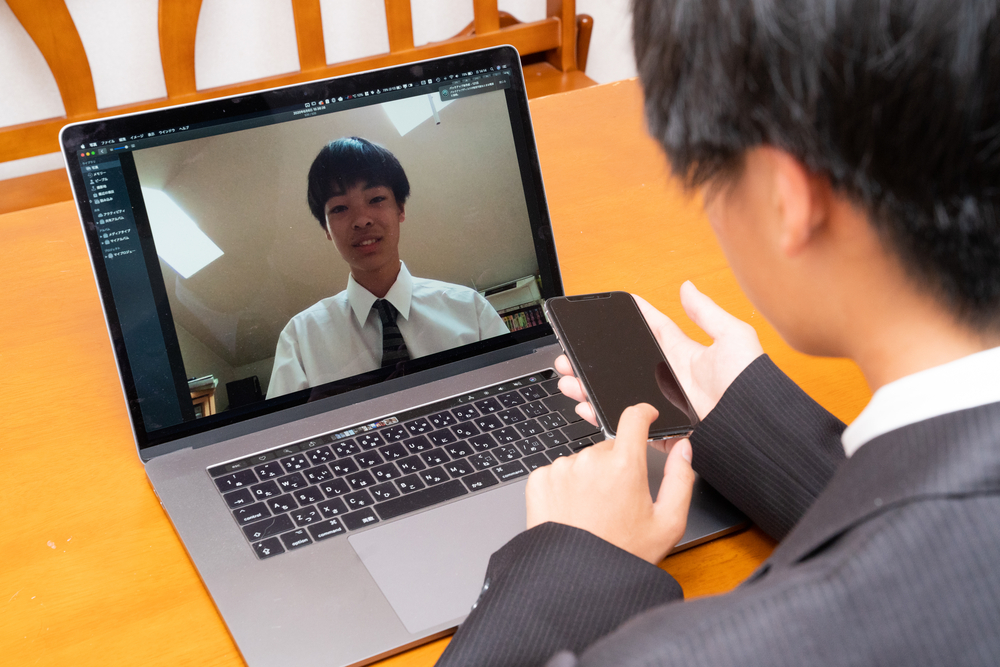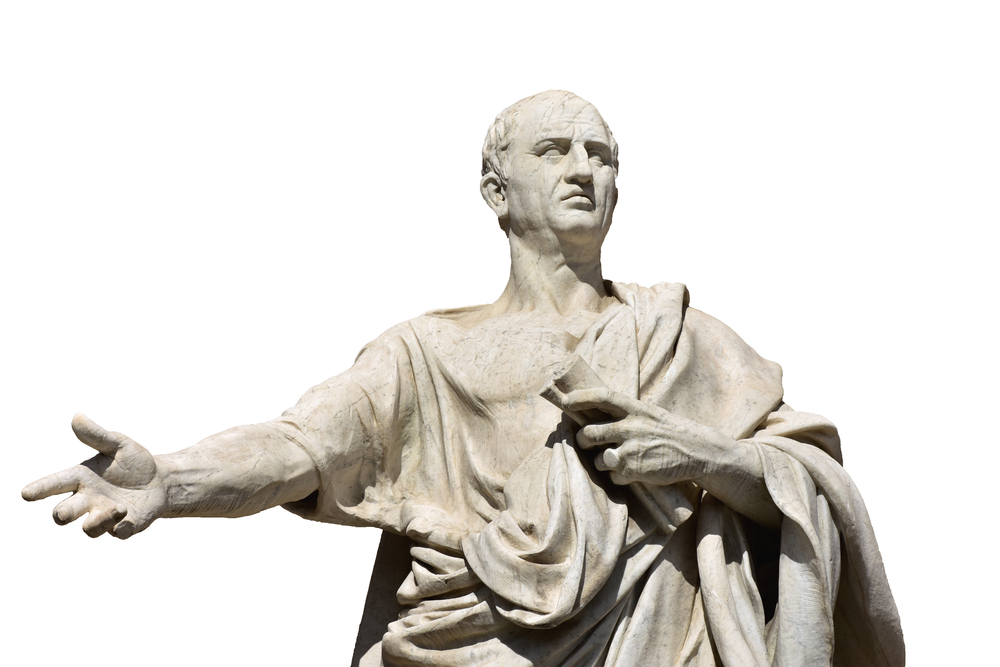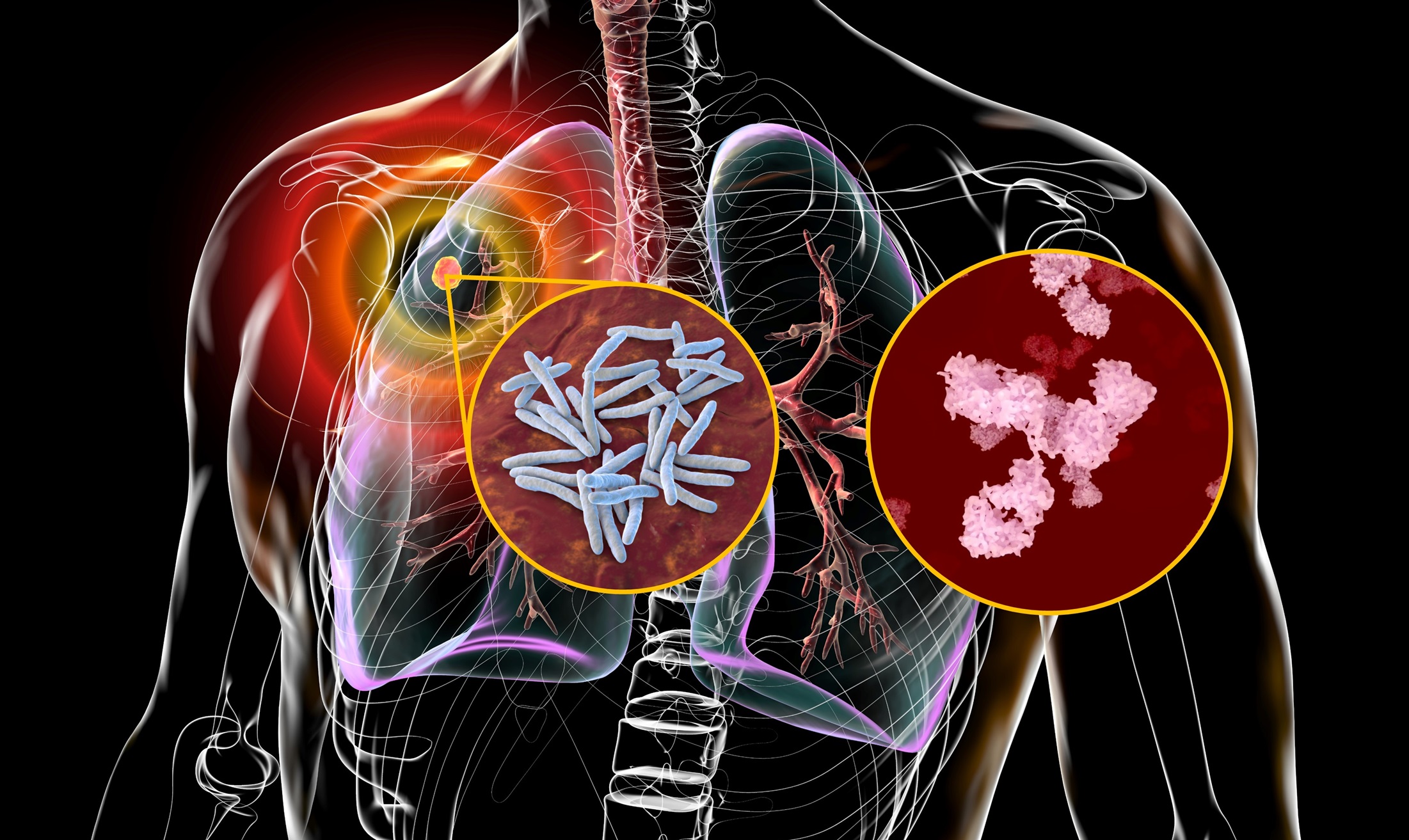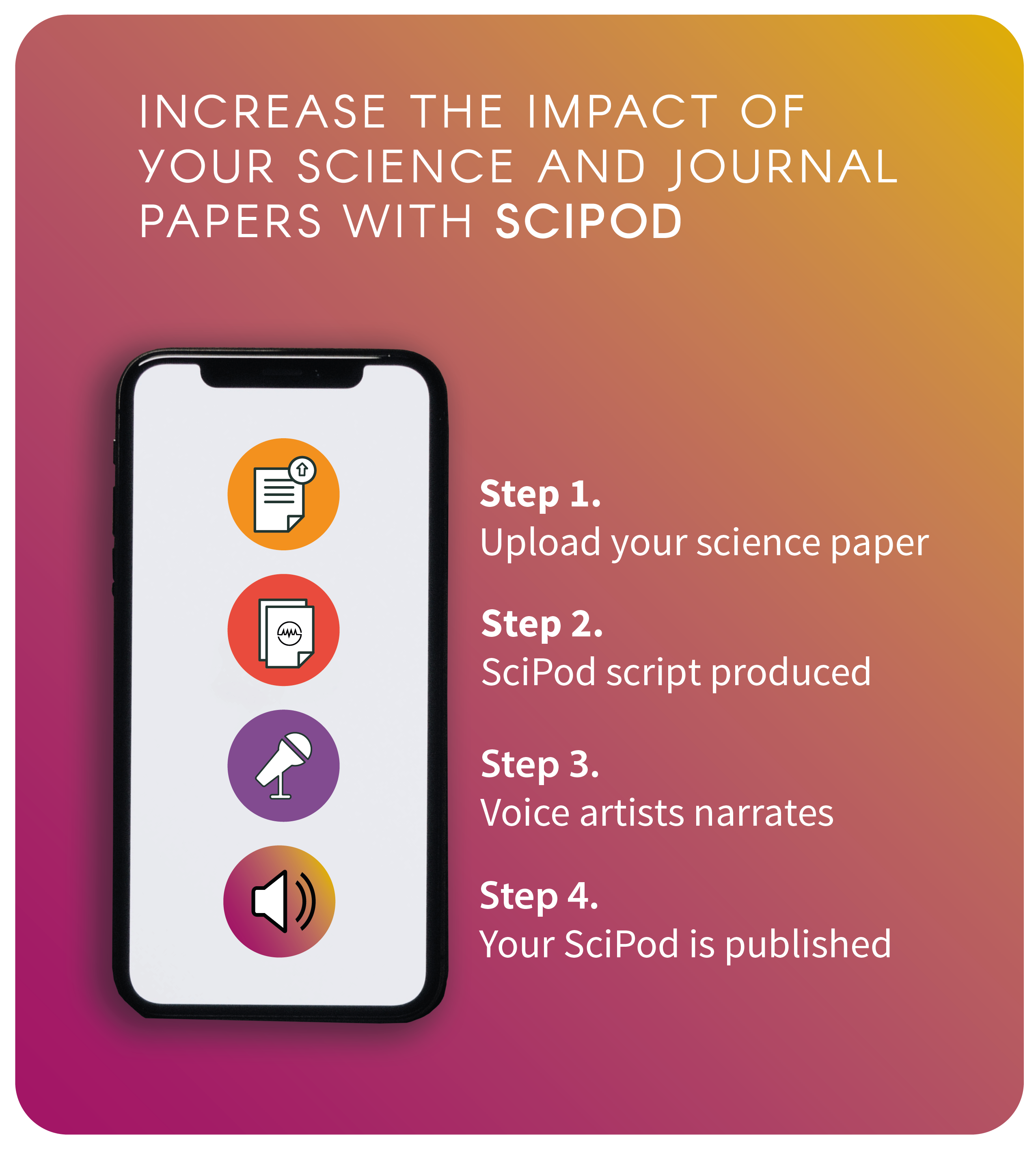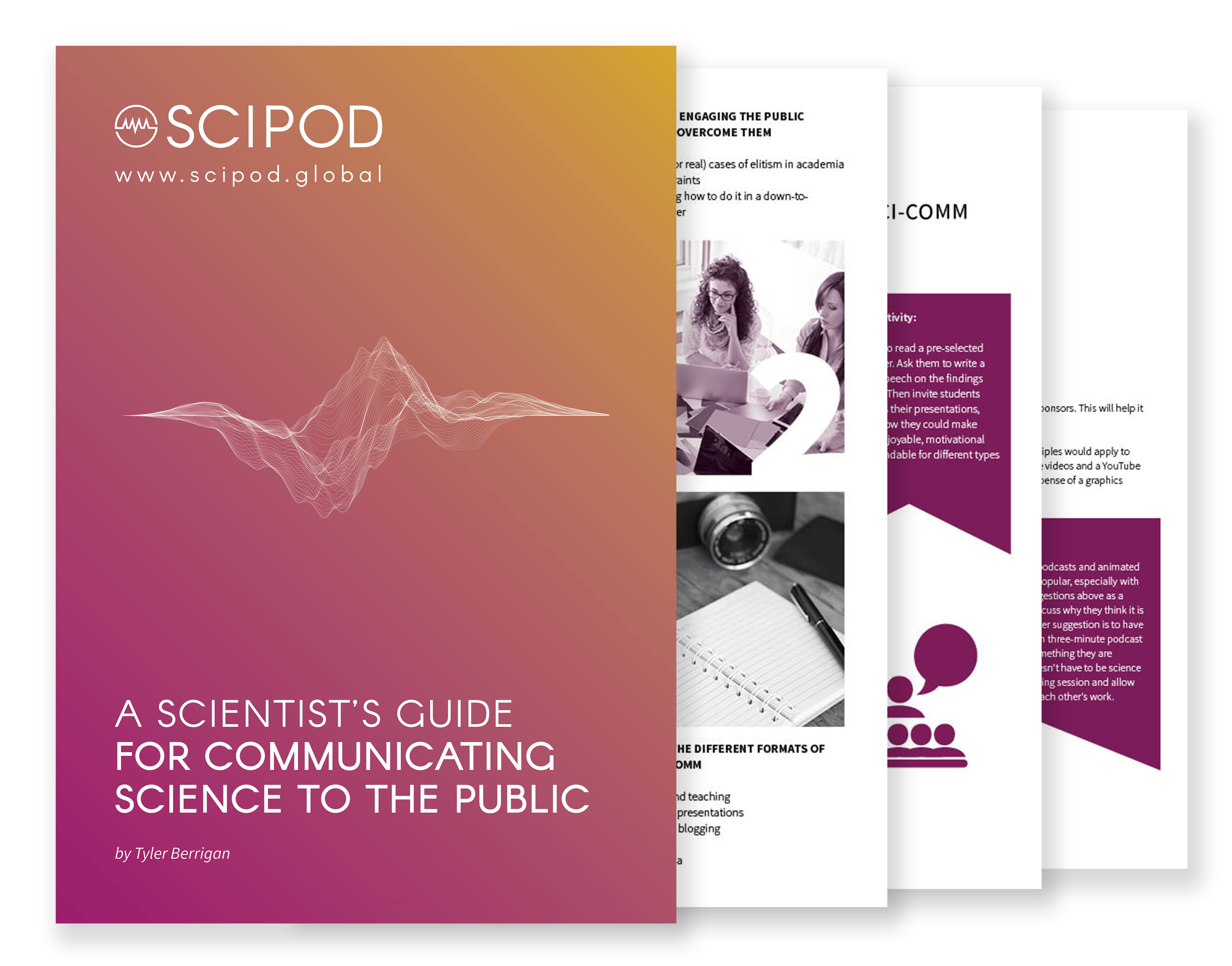Welcome to SciComm Radio
An exclusive interview series with leading scientists and science communicators

Click Below To Listen To A SciPod Radio Episode
Professor Yaniv Belhassen | What role does tourism have in peacebuilding and reconciliation between Israelis and Palestinians?
Audiobook
About this episode
Reconciliation and peace are emerging themes in tourism, with various post-conflict countries offering tours focused on peacebuilding. In the last few years, reconciliation tourism initiatives, which are defined as tourism services in which reconciliation is a major theme, have been also introduced in Israel and the Palestinian territories in the West Bank, amidst ongoing conflicts. Professor Yaniv Belhassen, of the Ben-Gurion University of the Negev, explores eight organizations that have offered such tours. His analysis suggests that ideas about reconciliation in these tours have shared characteristics in the way they are manifested in the travel experiences offered to tourists. In doing so, this study illuminates the symbolic role of tourism as a cultural arena with a transformative potential where ideas about peacebuilding can be imagined even in the places where conflicts are still active. More
Original Article Reference
This SciPod is a summary of the paper ‘Tourism as a Space of Possibilities: Reconciliation Tourism Enterprises in a Conflict-Ridden Destination’ in the Journal of Travel Research, https://doi.org/10.1177/00472875221130497
Contact
For further information, you can connect with Professor Yaniv Belhassen at yanivbel@bgu.ac.il
This work is licensed under a Creative Commons Attribution 4.0 International License. 
What does this mean?
Share: You can copy and redistribute the material in any medium or format
Adapt: You can change, and build upon the material for any purpose, even commercially.
Credit: You must give appropriate credit, provide a link to the license, and indicate if changes were made.
Increase the impact of your research!
More episodes
Dr. Rebecca Rose | Adjusting Ventilator Settings Could Improve Outcomes for Premature Infants
Audiobook
About this episode
Premature birth puts infants at a greater risk of developing various medical conditions, including a chronic lung disease known as bronchopulmonary dysplasia – or BPD for short. Dr. Rebecca Rose, a neonatologist at Indiana University, recently explored how modulating ventilator settings used for very premature newborns can significantly improve their outcomes. More
Original Article Reference
This Audio is a summary of the paper ‘Adjusting ventilator settings to avoid air trapping in extremely premature infants reduces the need for tracheostomy and length of stay’, in Frontiers in Pediatrics, doi.org/10.3389/fped.2022.1059081
Contact
For further information, you can connect with Rebecca S. Rose at rrose@iu.edu
This work is licensed under a Creative Commons Attribution 4.0 International License. 
What does this mean?
Share: You can copy and redistribute the material in any medium or format
Adapt: You can change, and build upon the material for any purpose, even commercially.
Credit: You must give appropriate credit, provide a link to the license, and indicate if changes were made.
Increase the impact of your research!
More episodes
Professor Thea Brown | Unveiling Factors Linked to the Murder of Children by Their Parents
Audiobook
About this episode
Filicide, the killing of a child by a parent or a parental figure, is a heinous and incomprehensible crime. Professor Thea Brown, with her colleagues Associate Professor Danielle Tyson and Dr Paula Fernandez Arias from the Monash Deakin Filicide Research Hub shared between Monash and Deakin Universities, has been studying filicide for years, in the hope of uncovering common factors linked to filicide that could be included in future prevention initiatives. Her studies identified common social, familial, and personal circumstances that characterised many cases of filicide in Australia over the past decades. More
Original Article Reference
This Audio is a summary of the papers ‘Filicide offenders’, in Trends & issues in crime and criminal justice, https://doi.org/10.52922/ti09685;
‘An abominable crime: filicide in the context of parental separation and divorce’, in Children Australia, https://doi.org/10.1017/cha.2012.36; and ‘Filicide and parental separation and divorce’, in Child Abuse Review, https://doi.org/10.1002/car.2327.
Contact
For further information, you can connect with Thea Brown at Thea.Brown@monash.edu
This work is licensed under a Creative Commons Attribution 4.0 International License. 
What does this mean?
Share: You can copy and redistribute the material in any medium or format
Adapt: You can change, and build upon the material for any purpose, even commercially.
Credit: You must give appropriate credit, provide a link to the license, and indicate if changes were made.
Increase the impact of your research!
More episodes
Prof. Alastair Florence | Optimising Pharmaceutical Production Using Digital Models
Audiobook
About this episode
The development of safe and effective medicines that meet strict regulatory requirements has traditionally involved extensive experimentation, which can be laborious and costly. Incorporating digital processes, which can be used to produce individual pharmaceutical components, may provide a solution to manufacturing challenges by reducing development time, resource requirements, and costs. The Future Continuous Manufacturing and Advanced Crystallisation Hub, a flagship project at CMAC, at the University of Strathclyde, along with collaborators throughout the UK, has investigated the feasibility of using digital models to reduce costs, time and waste for high quality pharmaceutical production. More
Original Article Reference
This Audio is a summary of the paper ‘Digital process design to define and deliver pharmaceutical particle attributes’, in Chemical Engineering Research and Design, doi.org/10.1016/j.cherd.2023.07.003
Contact
For further information, you can connect with Prof. Alastair Florence at alastair.florence@strath.ac.uk
This work is licensed under a Creative Commons Attribution 4.0 International License. 
What does this mean?
Share: You can copy and redistribute the material in any medium or format
Adapt: You can change, and build upon the material for any purpose, even commercially.
Credit: You must give appropriate credit, provide a link to the license, and indicate if changes were made.
Increase the impact of your research!
More episodes
Prof. Christian Bréchot | ALF5755: A New Therapeutic Avenue for Alzheimer’s and Diabetic Neuropathy
Audiobook
About this episode
Many diseases become more likely to emerge as we age, with metabolic disorders such as diabetes, and neurodegenerative conditions, such as Alzheimer’s disease, representing two frequent manifestations of poor health in old age. While many age-related diseases present very differently, many share common underlying mechanisms. These include inflammation, a build-up of reactive oxygen molecules that can damage cellular components, and a lack of sensitivity to insulin. Treatments that can effectively target these mechanisms could have transformational effects on the age-related diseases that are fueled by them, including potentially preventing such diseases from developing in the first place. Prof. Christian Bréchot and colleagues at The Healthy Aging Company have developed a drug candidate: ALF5755, the pharmacological name of a protein called Hepatocarcinoma-Intestine-Pancreas, or HIP for short, also named Reg3A, that has shown exciting evidence of effectiveness on the cognitive disorders which occur during Alzheimer’s disease and the peripheral nerve damage that often occurs in diabetes, which is called diabetic neuropathy. More
Contact
For further information, you can connect with Prof. Christian Bréchot at cbrechot@usf.edu
This work is licensed under a Creative Commons Attribution 4.0 International License. 
What does this mean?
Share: You can copy and redistribute the material in any medium or format
Adapt: You can change, and build upon the material for any purpose, even commercially.
Credit: You must give appropriate credit, provide a link to the license, and indicate if changes were made.
Increase the impact of your research!
More episodes
Dr Piergiorgio Gentile | Utilising Cocoa Pod Waste to Improve the Sustainability of Chocolate
Audiobook
About this episode
With a history as rich as its flavour, chocolate in its various forms has been loved by people for over 5000 years. Currently, however, chocolate is facing a serious threat. The improper disposal of cocoa waste products is spreading devastating diseases through cocoa crops across the world. To address this serious problem, Dr Piergiorgio Gentile from Newcastle University and Dr Joel Girón-Hernández from Northumbria University with their collaborators have been exploring new uses for cocoa waste products, to increase sustainability and prevent the spread of crop diseases. More
Original Article Reference
This Audio is a summary of the papers: ‘Cocoa Pod Husk: A High-Pectin Source with Applications in the Food and Biomedical Fields’, in ChemBioEng Reviews, doi.org/10.1111/nyas.14686; and ‘From cocoa waste to sustainable bioink: valorising pectin for circular economy-driven tissue engineering’, in European Polymer Journal, doi.org/10.1016/j.eurpolymj.2024.112967
Contact
For further information, you can connect with Dr Joel Girón-Hernández at joel.l.g.hernandez@northumbria.ac.uk and Dr Piergiorgio Gentile at piergiorgio.gentile@newcastle.ac.uk
This work is licensed under a Creative Commons Attribution 4.0 International License. 
What does this mean?
Share: You can copy and redistribute the material in any medium or format
Adapt: You can change, and build upon the material for any purpose, even commercially.
Credit: You must give appropriate credit, provide a link to the license, and indicate if changes were made.
Increase the impact of your research!
More episodes
Dr Patrick Wagner – Professor Damian Raess | Globalisation: A Race to the Bottom or an Opportunity to Improve Labour Standards?
Audiobook
About this episode
Brazil, Russia, India and China, often known as the BRICs, have seen explosive growth in the past two decades and have asserted themselves as drivers of globalisation. Many scholars have researched the effects of this growth and development, and how these factors have affected domestic labour conditions. But are they asking the right questions? For instance, if developing countries invest in developed economies, will this lead to improved working conditions in the investing developing nation? Dr Patrick Wagner of the University of Konstanz, Germany, and Professor Damian Raess of the Catholic University of Lille, France, have conducted a study investigating whether Brazilian direct investment in Europe leads to improved working conditions back in Brazil. More
Original Article Reference
This Audio is a summary of ‘South to north investment linkages and decent work in Brazil’ in Labour. You can find the link on eu-renew.eu/podcast
The External is produced by EU-RENEW, and funded by the European Union’s Erasmus Programme, within the framework of the Jean Monnet Policy Debate EU-RENEW project.
This work is licensed under a Creative Commons Attribution 4.0 International License. 
What does this mean?
Share: You can copy and redistribute the material in any medium or format
Adapt: You can change, and build upon the material for any purpose, even commercially.
Credit: You must give appropriate credit, provide a link to the license, and indicate if changes were made.
Increase the impact of your research!
More episodes
Professor Deanna Kuhn | How Can We Equip Teens With Skills and Values of Reasoned, Respectful Discourse?
Audiobook
About this episode
Our world is facing new and frightening challenges, and political polarization has never been greater. Many see reasoned, respectful discourse as our only path to survival and progress, but attaining the skills and values it requires is not straightforward. Professor Deanna Kuhn of Columbia University has developed a discourse-based curriculum to help the next generation develop the values and the social and critical thinking skills they will need if they are to use tools of discourse to address the complex problems and challenges that await them. More
Original Article Reference
This Audio is based on Building Our Best Future: Thinking Critically About Ourselves and Our World, published by Wessex Press. Visit wessexlearning.com/collections/k-12-education, for the book or for a 30-minute or 80-minute video of the program in action.
Contact
You can connect directly with Deanna Kuhn at kuhn@tc.columbia.edu.
This work is licensed under a Creative Commons Attribution 4.0 International License. 
What does this mean?
Share: You can copy and redistribute the material in any medium or format
Adapt: You can change, and build upon the material for any purpose, even commercially.
Credit: You must give appropriate credit, provide a link to the license, and indicate if changes were made.
Increase the impact of your research!
More episodes
Professor Penelope Corfield | Key Changes in Daily Greetings in 18th Century Britain
Audiobook
About this episode
In 18th century Britain, the old tradition of deep bowing and curtseying as a form of greeting slowly evolved into a brief touch of the cap or head (for men), or quick bob of the body (for women). Simultaneously, a new form of urban greeting was emerging: the handshake. How and why did the handshake gain such popularity, becoming our most standard greeting today? This phenomenon is explored in a new essay published in the journal Urban History and authored by Professor Penelope Corfield of London University. More
Original Article Reference
This audio is a summary of ‘Egalitarian Greetings: The social spread of the handshake in urbanising Britain, 1700-1850’ in Urban History (2024) (doi:10.1017/S0963926821000274) with contributing material from ‘Fleeting gestures and changing styles of greeting: researching daily life in British towns in the long eighteenth century’ in Urban History (2022).
Contact
For further information, you can connect with Professor Penelope J Corfield at penelopecorfield@gmail.com. You can also visit her website at www.penelopejcorfield.com and her Georgian Witnesses website at www.thegeorgiansdeedsandmisdeeds.com
This work is licensed under a Creative Commons Attribution 4.0 International License. 
What does this mean?
Share: You can copy and redistribute the material in any medium or format
Adapt: You can change, and build upon the material for any purpose, even commercially.
Credit: You must give appropriate credit, provide a link to the license, and indicate if changes were made.
Increase the impact of your research!
More episodes
Dr Christopher Buck | Mint: A Fresh Perspective in the Fight Against Covid
Audiobook
About this episode
Dr. Christopher Buck, a virologist at the US National Cancer Institute in Bethesda, Maryland, has been working to spread the word about a growing body of scientific literature suggesting that mint and related herbs can help fight Covid infections. In his recent review article, “The Mint Versus Covid Hypothesis,” he makes a case for the idea that decentralized clinical trials could be used to more thoroughly explore this exciting idea. More
German version
Dr. Christopher Buck, Virologe am US National Cancer Institute in Bethesda, Maryland, setzt sich dafür ein, eine wachsende Zahl wissenschaftlicher Studien bekannt zu machen, die darauf hinweisen, dass Minze und verwandte Kräuter bei der Bekämpfung von COVID -Infektionen helfen können. In seinem jüngsten Übersichtsartikel “Die Minze-gegen-Covid-Hypothese” argumentiert er, dass dezentralisierte klinische Studien genutzt werden könnten, um diese aufregende Idee gründlicher zu erforschen. More
Mandarin version
克里斯托弗·巴克是一名来自美国马里兰州贝塞斯达国家癌症研究所的病毒学家,他一直都在努力向公众宣传:越来越多的科学文献都提出了 “薄荷和相关草本植物在抵抗新冠病毒感染方面发挥着重要的作用”这一发现。在他最新发表的一篇文献综述《薄荷与新冠病毒的假说》中,他为这一发现提出了一个论据:去中心化临床试验可以更清晰地揭示“薄荷和相关草本植物在抵抗新冠病毒感染方面发挥着重要的作用”。 More
Original Article Reference
This Audio is a summary of the paper ‘The mint versus Covid hypothesis’, in Medical Hypotheses.
https://doi.org/10.1016/j.mehy.2023.111047
Cocktail recipes are available on Dr. Buck’s Substack blog, “Viruses Must Die”
This work is licensed under a Creative Commons Attribution 4.0 International License. 
What does this mean?
Share: You can copy and redistribute the material in any medium or format
Adapt: You can change, and build upon the material for any purpose, even commercially.
Credit: You must give appropriate credit, provide a link to the license, and indicate if changes were made.
Increase the impact of your research!
More episodes
Dr Ceccherini-Nelli | What Makes Great Orators’ Speeches Effective and Persuasive?
Audiobook
About this episode
Since ancient Greek civilization, we have sought to identify what makes some people more effective and persuasive orators than others. Studies have suggested that this might be related to rhythmic patterns in certain speech, but evidence is limited. Dr. Ceccherini-Nelli of the University of Alberta conducted a study with his colleagues to explore this. They looked at the patterns present in political speeches and conducted experiments to determine their effects. More
Original Article Reference
This audio is a summary of ‘Speech Perceptual Periodicities Facilitate Lexical Access and Contextual Emotional Responses’ in the International Journal of English Linguistics. https://doi.org/10.5539/ijel.v4n3p96
Contact
For further information, you can connect with Dr. Alfonso Ceccherini-Nelli at ceccheri@ualberta.ca.
This work is licensed under a Creative Commons Attribution 4.0 International License. 
What does this mean?
Share: You can copy and redistribute the material in any medium or format
Adapt: You can change, and build upon the material for any purpose, even commercially.
Credit: You must give appropriate credit, provide a link to the license, and indicate if changes were made.
Increase the impact of your research!
More episodes
Professor Steven Brams | A Game That Stymies AI
Audiobook
About this episode
AI appears all-powerful when playing sophisticated games such as Chess and Go against human opponents. Moreover, recent developments in AI have allowed it to summarize bodies of complex text, generate images and even video. These developments come with warnings that AI could replace many jobs, undermine democratic elections or even pose a threat to the existence of humanity. However, AI is largely based on observing and learning patterns; so, what happens when there are no patterns? Professor Steven Brams of New York University and colleagues have analyzed the potential of beating AI when playing a deceptively simple game called Catch-Up, simply by making random moves. More
Original Article Reference
This Audio is a summary of ‘A Game That Stymies AI’, available at https://plus.maths.org/content/game-stymies-ai
Contact
For further information, you can connect with Professor Steven J. Brams at steven.brams@nyu.edu
This work is licensed under a Creative Commons Attribution 4.0 International License. 
What does this mean?
Share: You can copy and redistribute the material in any medium or format
Adapt: You can change, and build upon the material for any purpose, even commercially.
Credit: You must give appropriate credit, provide a link to the license, and indicate if changes were made.
Increase the impact of your research!
More episodes
Dr Katty Kang | Deciphering the Molecular Origins of Brain Disorders
Audiobook
About this episode
During brain development, anomalies may arise which lead to serious conditions such as epilepsy, triggering seizures and requiring lifelong monitoring and medication. However, the underlying causes and the way in which these defects occur are not completely understood. Dr Katty (Jing-Qiong) Kang and colleagues at Vanderbilt University Medical Centre in the USA have conducted extensive research into the molecular mechanisms associated with developmental brain disorders, with a focus on genetic epilepsy. They propose novel therapeutic targets to effectively manage symptoms and improve clinical outcomes by targeting the root cause. More
Original Article Reference
This Audio is a summary of the papers ‘Common molecular mechanisms of SLC6A1 variant-mediated neurodevelopmental disorders in astrocytes and neurons’, in Brain. https://doi.org/10.1093/brain/awab207.
‘4-Phenylbutyrate restored γ-aminobutyric acid uptake and reduced seizures in SLC6A1 patient variant-bearing cell and mouse models’, in Brain Communications. https://doi.org/10.1093/braincomms/fcac144.
‘Astrocytic GABA transporter 1 deficit in novel SLC6A1 variants mediated epilepsy: Connected from protein destabilization to seizures in mice and humans’, in Neurobiology of Disease. https://doi.org/10.1016/j.nbd.2022.105810.
Contact
For further information, you can connect with Dr Kang at Jingqiong.kang@vumc.org; jingqiong.kang@vanderbilt.edu
This work is licensed under a Creative Commons Attribution 4.0 International License. 
What does this mean?
Share: You can copy and redistribute the material in any medium or format
Adapt: You can change, and build upon the material for any purpose, even commercially.
Credit: You must give appropriate credit, provide a link to the license, and indicate if changes were made.
Increase the impact of your research!
More episodes
Riccardo Losciale | Overcoming Barriers to Protect Seagrass Meadows: A Critical Marine Ecosystem
Audiobook
About this episode
Shallow coastal waters are home to a unique and important plant – the seagrasses. Seagrasses, defined as underwater flowering plants, form vast meadows within shallow coastal waters across almost all continents. Seagrass meadows are one of the most significant ecosystems on the planet, and our future depends on them. Seagrass is vital for biodiversity, supports global fisheries, and is indispensable for tackling climate change. Despite the value of seagrass meadows, efforts to conserve them are falling short. Through their research, Riccardo Losciale and his team from James Cook University in Australia aim to identify and overcome the barriers to seagrass conservation. More
Original Article Reference
This Audio is a summary of the papers: ‘The public perception of the role, importance, and vulnerability of seagrass. A case study from the Great Barrier Reef’, in Environmental Development, https://doi.org/10.1016/j.envdev.2022.100757; and ‘The vulnerability of World Heritage seagrass habitats to climate change’, in Global Change Biology, doi.org/10.1111/gcb.17113
Contact
For further information, you can connect with Riccardo Losciale at riccardo.losciale@my.jcu.edu.au
This work is licensed under a Creative Commons Attribution 4.0 International License. 
What does this mean?
Share: You can copy and redistribute the material in any medium or format
Adapt: You can change, and build upon the material for any purpose, even commercially.
Credit: You must give appropriate credit, provide a link to the license, and indicate if changes were made.
Increase the impact of your research!
More episodes
Dr Matthew Sherrer | The Icarus Paradox in Anesthesiology: Building on Success and Avoiding Stagnation
Audiobook
About this episode
As a medical specialty, anesthesiology has made remarkable progress to deliver patient safety at an incredibly high level, while administering drugs that could potentially be very dangerous at a slightly increased dose. However, just like the case of Icarus, a character in Greek mythology who flew too close to the sun before plummeting back to Earth, success can carry the seeds of failure. The impressive progress towards patient safety could conceivably lead to the extinction of anesthesiology as a specialty. In the context of cutting costs and an environment where the return-on-investment for anesthesiologists is not always clear, there may be a temptation to replace anesthesiologists with other professionals, such as specialized sedation nurses, or with new technologies. More
Original Article Reference
This Audio is a summary of the paper ‘The Icarus Paradox and the Future of Anesthesiology’, in Anesthesia & Analgesia, doi.org/10.1213/ANE.0000000000006253
Contact
For further information, you can connect with Dr. Matthew Sherrer at dsherrer@uabmc.edu
This work is licensed under a Creative Commons Attribution 4.0 International License. 
What does this mean?
Share: You can copy and redistribute the material in any medium or format
Adapt: You can change, and build upon the material for any purpose, even commercially.
Credit: You must give appropriate credit, provide a link to the license, and indicate if changes were made.
Increase the impact of your research!
More episodes
Professor Tanja Börzel | How Identity Politics Shapes European Union Integration
Audiobook
About this episode
The war in Ukraine has tested the resilience and unity of the European Union in unprecedented ways. As with some past European crises, EU member states have shown a willingness to unify and cooperate. However, unlike during other crises, this hasn’t resulted in strengthened EU regulatory or fiscal powers. In recent research, Professor Tanja Börzel at Freie Universität Berlin explores why this is the case. More
Original Article Reference
This Audio is a summary of the paper ‘European Integration and the War in Ukraine: Just Another Crisis?’ in the Journal of Common Market Studies. You can find the link on eu-renew.eu/podcast/
The External is produced by EU-RENEW, and funded by the European Union’s Erasmus Programme, within the framework of the Jean Monnet Policy Debate EU-RENEW project.
This work is licensed under a Creative Commons Attribution 4.0 International License. 
What does this mean?
Share: You can copy and redistribute the material in any medium or format
Adapt: You can change, and build upon the material for any purpose, even commercially.
Credit: You must give appropriate credit, provide a link to the license, and indicate if changes were made.
Increase the impact of your research!
More episodes
Dr John Kershner | Understanding the Causes and Brain Mechanisms Behind Dyslexia
Audiobook
About this episode
Individuals with dyslexia encounter difficulties in learning to read, despite possessing a normal level of intelligence and having access to qualified teachers and educational materials. However, the causes of dyslexia remain disputed. One suggestion is that dyslexia may be related to stress, either experienced by the afflicted individual at a young age, or through inheriting stress-related biological changes from their parents. Dr John Kershner, a neuropsychologist at the University of Toronto, has conducted extensive research on this alternative hypothesis and provides compelling evidence to support this emerging concept. More
Original Article Reference
This Audio is a summary of the paper ‘Early life stress, literacy and dyslexia: an evolutionary perspective’, in Brain Structure and Function, doi.org/10.1007/s00429-024-02766-8, licensed under a Creative Commons Attribution 4.0 International license, https://creativecommons.org/licences/by/4.0/.
Contact
For further information, you can connect with Dr Kershner at John.kershner@utoronto.ca
This work is licensed under a Creative Commons Attribution 4.0 International License. 
What does this mean?
Share: You can copy and redistribute the material in any medium or format
Adapt: You can change, and build upon the material for any purpose, even commercially.
Credit: You must give appropriate credit, provide a link to the license, and indicate if changes were made.
Increase the impact of your research!
More episodes
Dr. P. R. Raghavan | The Potential Effects of a Dietary Supplement on a Range of Health Issues
Audiobook
About this episode
Dr. P. R. Raghavan, CEO and Chairman of Nanorx Inc., developed Metadichol, a nutritional supplement that has shown potential in treating a range of health issues. Dr. Raghavan suggests that the supplement may help to stave off illnesses such as diabetes and antibiotic-resistant infections. More
Contact
For further information, contact Dr. Raghavan at raghavan@nanorxinc.com
This work is licensed under a Creative Commons Attribution 4.0 International License. 
What does this mean?
Share: You can copy and redistribute the material in any medium or format
Adapt: You can change, and build upon the material for any purpose, even commercially.
Credit: You must give appropriate credit, provide a link to the license, and indicate if changes were made.
Increase the impact of your research!
More episodes
Dr. Matthew Sherrer | An Infinite Game Mindset for Enhanced Cooperation in Anesthesia
Audiobook
About this episode
Anesthesia in the US is currently delivered through a team-based approach, with physician anesthesiologists supervising certified registered nurse anesthetists. However, in over 20 states, there is no requirement for nurse anesthetists to be supervised by anesthesiologists, allowing them to work independently. This has resulted in a bitter turf war over the rights and responsibilities of physicians and advanced practice nurses working in this discipline to provide patient care, paving the way for daily acrimony and a toxic working environment. The mindset behind this adversarial approach can be compared with a “finite game”, where there are clear winners and losers. Aiming to challenge this dysfunctional tribalism, Dr. Matthew Sherrer from the University of Alabama Birmingham and colleagues have drawn on an alternative mindset: the infinite game. More
Original Article Reference
This Audio is a summary of the paper ‘The Infinite Game: One Possible Future of Anesthesia in the United States’, in Anesthesia & Analgesia, doi.org/10.1213/ANE.0000000000006628
Contact
For further information, you can connect with Dr. Matthew Sherrer at dsherrer@uabmc.edu
This work is licensed under a Creative Commons Attribution 4.0 International License. 
What does this mean?
Share: You can copy and redistribute the material in any medium or format
Adapt: You can change, and build upon the material for any purpose, even commercially.
Credit: You must give appropriate credit, provide a link to the license, and indicate if changes were made.
Increase the impact of your research!
More episodes
Professor Pei Wang | Defining AI to Ensure Effective Research and Policymaking
Audiobook
Defining AI to Ensure Effective Research and Policymaking
About this episode
Artificial intelligence – or AI – is receiving increasing attention for its rapid development and potential to change society. Researchers are working hard to develop its capabilities, while regulators are racing to ensure it is managed and governed properly. But what do we mean by AI, and how can we define such a complex term? In a recent paper, Professor Pei Wang at Temple University argues that the lack of an agreed definition makes it difficult for policymakers to assess what AI will be capable of in the near future, or even which kinds of AI are desirable. To combat this, he discusses what makes a robust definition, and suggests his own. More
Original Article Reference
This Audio is a summary of ‘On Defining Artificial Intelligence’ in the Journal of Artificial General Intelligence, doi.org/10.2478/jagi-2019-0002
Contact
For further information, you can connect with Professor Pei Wang at pei.wang@temple.edu
This work is licensed under a Creative Commons Attribution 4.0 International License. 
What does this mean?
Share: You can copy and redistribute the material in any medium or format
Adapt: You can change, and build upon the material for any purpose, even commercially.
Credit: You must give appropriate credit, provide a link to the license, and indicate if changes were made.
Increase the impact of your research!
More episodes
Professor Lobelia Samavati | Paving the Way for Antibody-based Diagnostics for Tuberculosis and Sarcoidosis
Audiobook
About this episode
Tuberculosis – or TB – is a global health threat, with 10 million new cases annually. Diagnosing TB can be a challenge, as there is a lack of rapid, point-of-care diagnostic tests. It can also be difficult to distinguish between TB and other inflammatory diseases, such as Sarcoidosis. One option may be to identify antibodies in patient samples that can reveal the presence of TB. However, current antibody tests for TB lack accuracy. Professor Lobelia Samavati and colleagues at the Wanye State University School of Medicine in Michigan are tackling this challenge to cast light on the immune signature of these diseases. Their aim is to develop new diagnostic techniques for TB and Sarcoidosis. More
Original Article Reference
This Audio is a summary of the papers ‘Development of a T7 Phage Display Library to Detect Sarcoidosis and Tuberculosis by a Panel of Novel Antigens’, in EBioMedicine, doi.org/10.1016/j.ebiom.2015.03.007; and ‘Discovery of Novel Transketolase Epitopes and the Development of IgG-Based Tuberculosis Serodiagnostics’, in Microbiology Spectrum, doi.org/10.1128/spectrum.03377-22
Contact
For further information, you can connect with Professor Lobelia Samavati at ay6003@wayne.edu
This work is licensed under a Creative Commons Attribution 4.0 International License. 
What does this mean?
Share: You can copy and redistribute the material in any medium or format
Adapt: You can change, and build upon the material for any purpose, even commercially.
Credit: You must give appropriate credit, provide a link to the license, and indicate if changes were made.
Increase the impact of your research!
More episodes
Professor Xiaobei Li | How HR Management Can Help Businesses Weather a Changing World
Audiobook
About this episode
Businesses today exist in a changing world, which brings both opportunities for growth and increasingly complex challenges. To survive and thrive, organisations need a robust understanding of HR management. In their research, Professor Xiaobei Li and her colleagues at various universities, including University of New South Wales, Arizona State University and Peking University, recently explored how organisations can motivate their staff to ensure high-quality performance. More
Original Article Reference
This Audio is a summary of the papers: ‘Performance-based rewards and innovative behaviours’ in Human Resource Management; ‘Human Resource Practices and Firm Performance in China: The Moderating Roles of Regional Human Capital Quality and Firm Innovation Strategy’ in Management and Organization Review; and ‘Paradoxical Leader Behaviours in People Management: Antecedents and Consequences’ in Academy of Management Journal.
Contact
For further information, you can connect with Professor Xiaobei Li at xiaobeili99@163.com
This work is licensed under a Creative Commons Attribution 4.0 International License. 
What does this mean?
Share: You can copy and redistribute the material in any medium or format
Adapt: You can change, and build upon the material for any purpose, even commercially.
Credit: You must give appropriate credit, provide a link to the license, and indicate if changes were made.
Increase the impact of your research!
More episodes
Professor Uma Lele | Exploring How India Can Ensure Sustainable Growth and Resilience with Broad Participation into the Future
Audiobook
About this episode
India has seen impressive economic and institutional growth in recent years, but the country isn’t yet meeting its full potential. In a world that is increasingly volatile and uncertain, how can India overcome its challenges and ensure resilience into the future? In her recent work, Professor Uma Lele explores various ways that India can achieve this. More
Contact
For further information, you can connect with Professor Uma Lele at umalele1@gmail.com
This work is licensed under a Creative Commons Attribution 4.0 International License. 
What does this mean?
Share: You can copy and redistribute the material in any medium or format
Adapt: You can change, and build upon the material for any purpose, even commercially.
Credit: You must give appropriate credit, provide a link to the license, and indicate if changes were made.
Increase the impact of your research!
More episodes
Professor Ann Nevile | What Evidence Do Policymakers Need to Make Robust Decisions?
Audiobook
About this episode
Policy decisions are influenced by many factors, from the ideology of the policymaker and their advisors to political expediency. Most would also agree that key political decisions should be evidence-based. However, this is easier said than done. Understanding what evidence policymakers need, and how they should evaluate this, is key for more robust decision-making. More
Original Article Reference
This Audio is a summary of the paper ‘Evidence-based policy: What sort of evidence do governments need?’ in The Economic and Labour Relations Review, doi.org/10.1177/1035304613482822
Contact
For further information, you can connect with Professor Ann Nevile at Ann.Nevile@anu.edu.au
This work is licensed under a Creative Commons Attribution 4.0 International License. 
What does this mean?
Share: You can copy and redistribute the material in any medium or format
Adapt: You can change, and build upon the material for any purpose, even commercially.
Credit: You must give appropriate credit, provide a link to the license, and indicate if changes were made.
Increase the impact of your research!
More episodes
Moritz Wagner – Xiaopeng Wei | Investigating a Tax Loophole that Costs EU Countries Billions of Euros
Audiobook
About this episode
Cum-ex trading in European markets has been widespread, in which investors wrongfully receive refunds on dividend withholding tax they have never paid. Moritz Wagner and Xiaopeng Wei at the University of Canterbury and Adelaide recently explored the extent of this trading practice and its impact on markets and tax revenues. More
Original Article Reference
This Audio is a summary of the article ‘Ex-dividend day price and volume: the case of cum-ex trading’ in Applied Economics, doi.org/10.1080/00036846.2022.2141450
Contact
For further information, you can connect with Moritz Wagner at moritz.wagner@canterbury.ac.nz and Xiaopeng Wei at xiaopeng.wei@adelaide.edu.au
This work is licensed under a Creative Commons Attribution 4.0 International License. 
What does this mean?
Share: You can copy and redistribute the material in any medium or format
Adapt: You can change, and build upon the material for any purpose, even commercially.
Credit: You must give appropriate credit, provide a link to the license, and indicate if changes were made.
Increase the impact of your research!
More episodes
Dr Elif Miskioğlu | Assessing the Value of Intuition for Solving Complex Engineering Problems
Audiobook
About this episode
Experienced engineers are typically equipped with advanced technical knowledge and a unique professional skillset. These skillskets are often paried with impressive intuition, which allows engineers to devise solutions to complex real-world problems. Engineering faculty at Bucknell University, Embry-Riddle Aeronautical University, and The Ohio State University recently engaged in important research to further our understanding of intuition in engineering practice. More
Contact
For further information, you can connect with Dr Elif Miskioğlu at elif.miskioglu@bucknell.edu
This work is licensed under a Creative Commons Attribution 4.0 International License. 
What does this mean?
Share: You can copy and redistribute the material in any medium or format
Adapt: You can change, and build upon the material for any purpose, even commercially.
Credit: You must give appropriate credit, provide a link to the license, and indicate if changes were made.
Increase the impact of your research!
More episodes
Exploring Changes in How the EU Screens Foreign Investments
Audiobook
About this episode
Foreign direct investment occurs when a resident in one economy invests in and establishes significant influence over an enterprise in another economy. In a changing geopolitical landscape, the EU and its member states have introduced novel mechanisms for screening foreign direct investment for national security risks. However, these mechanisms vary substantially in how they operate. In a recent study, Professor Sarah Bauerle Danzman at Indiana University and Professor Sophie Meunier at Princeton University explore the factors that explain this. They also highlight key policy implications in this shift towards a more assertive EU investment policy. More
Original Article Reference
This Audio is a summary of the article ‘Naïve no more: Foreign direct investment screening in the European Union’, in a special issue of Global Policy. You can find the link on eu-renew.eu/podcast/
The External is produced by EU-RENEW, and funded by the European Union’s Erasmus Programme, within the framework of the Jean Monnet Policy Debate EU-RENEW project.
This work is licensed under a Creative Commons Attribution 4.0 International License. 
What does this mean?
Share: You can copy and redistribute the material in any medium or format
Adapt: You can change, and build upon the material for any purpose, even commercially.
Credit: You must give appropriate credit, provide a link to the license, and indicate if changes were made.
Increase the impact of your research!
More episodes
Dr Abayomi Sanusi | Can Faith Institutions Encourage People to Maintain Healthy Blood Pressure?
Audiobook
About this episode
High blood pressure, also known as hypertension, is a common and potentially dangerous condition that increases the risk of many severe medical issues, including heart disease, heart attack, stroke, heart failure, and kidney disease. Dr Abayomi Sanusi, a researcher at the University of York, recently carried out a study exploring how faith-based institutions could encourage their community members to adopt healthy behaviours that can reduce hypertension. More
Original Article Reference
This Audio is a summary of the paper ‘Cardiovascular health promotion: A systematic review involving effectiveness of faith-based institutions in facilitating maintenance of normal blood pressure’, in PLOS Global Public Health, doi.org/10.1371/journal.pgph.0001496
Contact
For further information, you can connect with Dr Abayomi Sanusi at abayomi.sanusi@york.ac.uk
This work is licensed under a Creative Commons Attribution 4.0 International License. 
What does this mean?
Share: You can copy and redistribute the material in any medium or format
Adapt: You can change, and build upon the material for any purpose, even commercially.
Credit: You must give appropriate credit, provide a link to the license, and indicate if changes were made.
Increase the impact of your research!
More episodes
Dr James Fenton | Why We Should Question Reforestation in the Scottish Highlands
Audiobook
About this episode
The Scottish Highlands are known as an area of great natural beauty. One notable aspect of the area’s ecology is the relative lack of trees and woodland. In recent years, there have been concerted efforts to introduce more trees. However, Dr James Fenton argues that this fundamentally misunderstands Scotland’s environmental history, imposes southern ideas on the northern landscape, and risks undermining the unique ecology of the Highlands. More
Original Article Reference
This SciPod is a summary of Chapter 2 and Chapter 3 in the book Landscape Change in the Scottish Highlands: Imagination and Reality, by Dr James Fenton, which can be purchased at www.whittlespublishing.com/Landscape_Change_in_the_Scottish_Highlands
Contact
For further information, you can connect with Dr Fenton at james@fenton.scot
This work is licensed under a Creative Commons Attribution 4.0 International License. 
What does this mean?
Share: You can copy and redistribute the material in any medium or format
Adapt: You can change, and build upon the material for any purpose, even commercially.
Credit: You must give appropriate credit, provide a link to the license, and indicate if changes were made.
Increase the impact of your research!
More episodes
Dr Eva Straus | Exploring the Professional Lives of Remote Workers During the COVID-19 Pandemic
Audiobook
About this episode
During the COVID-19 pandemic, many people across the globe changed the way they worked, to comply with social distancing measures. Many people worked from home, and attended meetings virtually using videoconferencing platforms. Dr Eva Straus, Dr Lars Uhlig, Professor Jana Kühnel, and Professor Christian Korunka at the University of Vienna recently carried out a diary-based study exploring the wellbeing, perceived productivity, and professional engagement of remote workers during the pandemic. More
Original Article Reference
This Audio is a summary of the paper ‘Remote workers’ well-being, perceived productivity, and engagement: which resources should HRM improve during COVID-19? A longitudinal diary study’, in The International Journal of Human Resource Management, doi.org/10.1080/09585192.2022.2075235
Contact
For further information, you can connect with Dr Eva Straus at eva.straus@univie.ac.at
This work is licensed under a Creative Commons Attribution 4.0 International License. 
What does this mean?
Share: You can copy and redistribute the material in any medium or format
Adapt: You can change, and build upon the material for any purpose, even commercially.
Credit: You must give appropriate credit, provide a link to the license, and indicate if changes were made.


